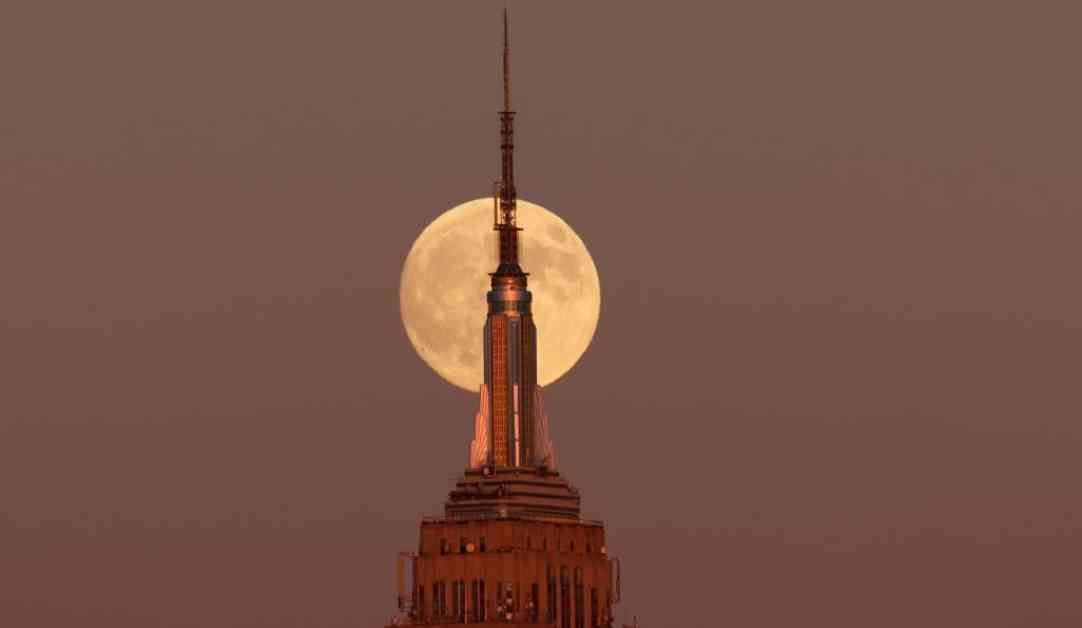Stargazers are set to witness a spectacular sight as the year’s largest supermoon, known as the Hunter’s Moon, lights up the sky. This supermoon, the third of four this year, appears even bigger and brighter compared to the ones in August and September. It reached its full lunar phase on Thursday, Oct. 17, with peak illumination in the United States at 7:26 AM ET, according to NASA. Additionally, it aligns with Comet Tsuchinshan-ATLAS, also known as C/2023 A3, shining brightly and visible to the naked eye at a magnitude of +0.5.
But why is it called the Hunter’s Moon? The Old Farmer’s Almanac, which has been naming full moons since the 1930s, explains that the Hunter’s Moon signals the start of hunting season. After the Harvest Moon, which comes before the Hunter’s Moon, fields are harvested, making it easier for hunters to spot animals and foxes waiting to pounce. Other names for this full moon include the Sanguine or Blood Moon, representing the blood from hunting or the changing autumn leaves’ color.
If you missed the Hunter’s Moon, don’t worry. The next supermoon is set to appear on Nov. 15, 2024, marking the final one of the year. To catch the best view of a supermoon, timing is crucial. The supermoon looks most impressive during moonrise or moonset when it’s near the horizon. It’s also recommended to escape light pollution by heading outside city limits for a clearer view. While no special equipment is required to see the supermoon, binoculars or a telescope can offer a more detailed look. When the moon is low on the horizon and framed by landmarks, an optical illusion makes it appear even larger.
In addition to being known as the Hunter’s Moon, the next full moon goes by various names such as the Travel Moon, the Dying Grass Moon, or the Sanguine or Blood Moon. It also marks the start of Sukkoth, Sharad Purnima, Kumara Purnima, Kojagari Purnima, Navanna Purnima Kojagrat Purnima, or Kaumudi Purnima, and the end of Vassa and Pavarana. It is also associated with the Thadingyut Festival Moon, the end of the Phaung Daw U Pagoda Festival, and Vap Poya, as mentioned by NASA skywatcher Gordon Johnston.
So, mark your calendars for the next supermoon and take the opportunity to witness this breathtaking celestial event. Whether you are a seasoned stargazer or a casual observer, the beauty of the Hunter’s Moon is something not to be missed.


